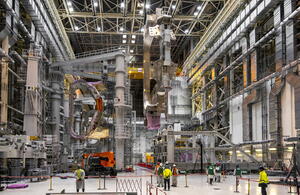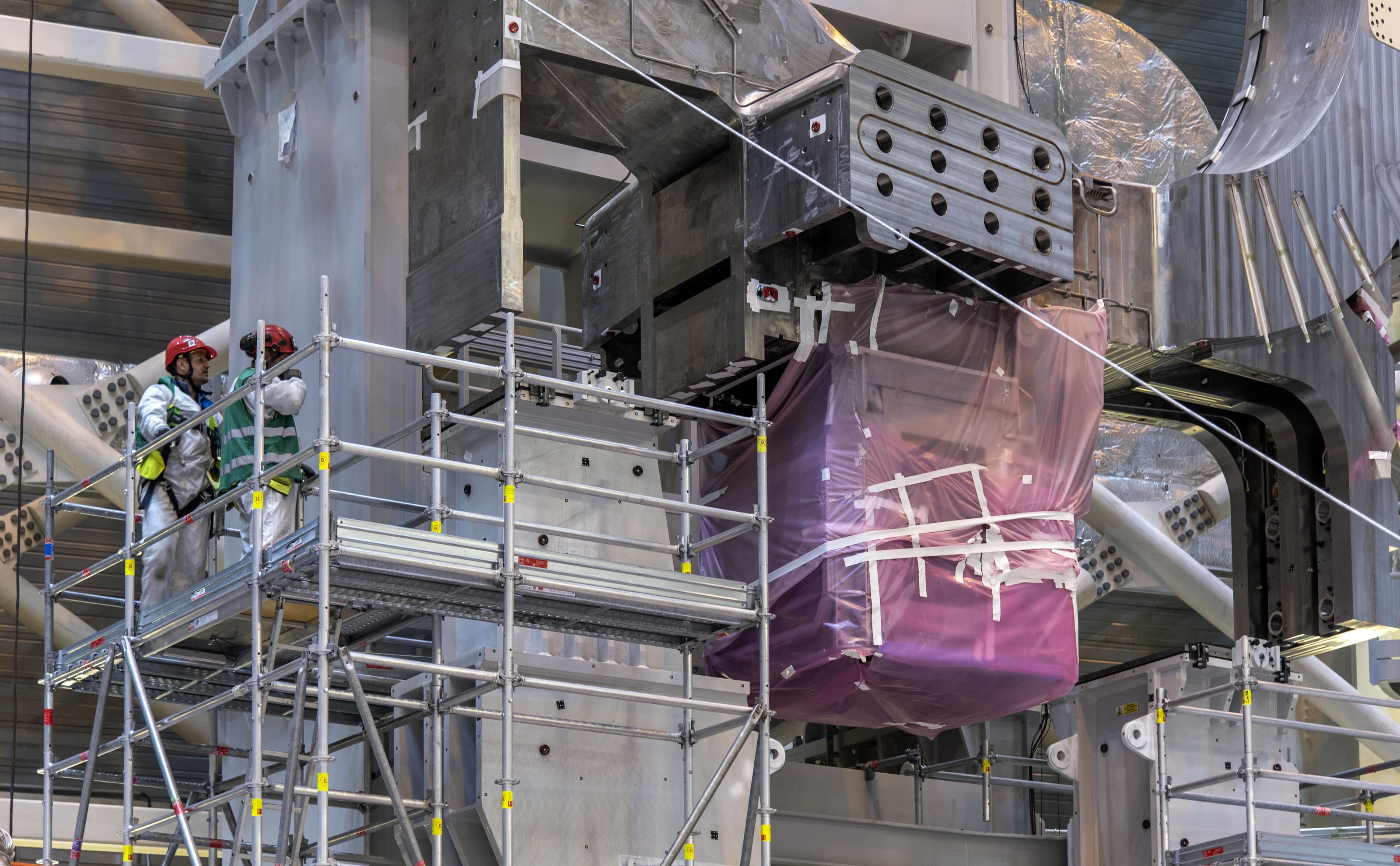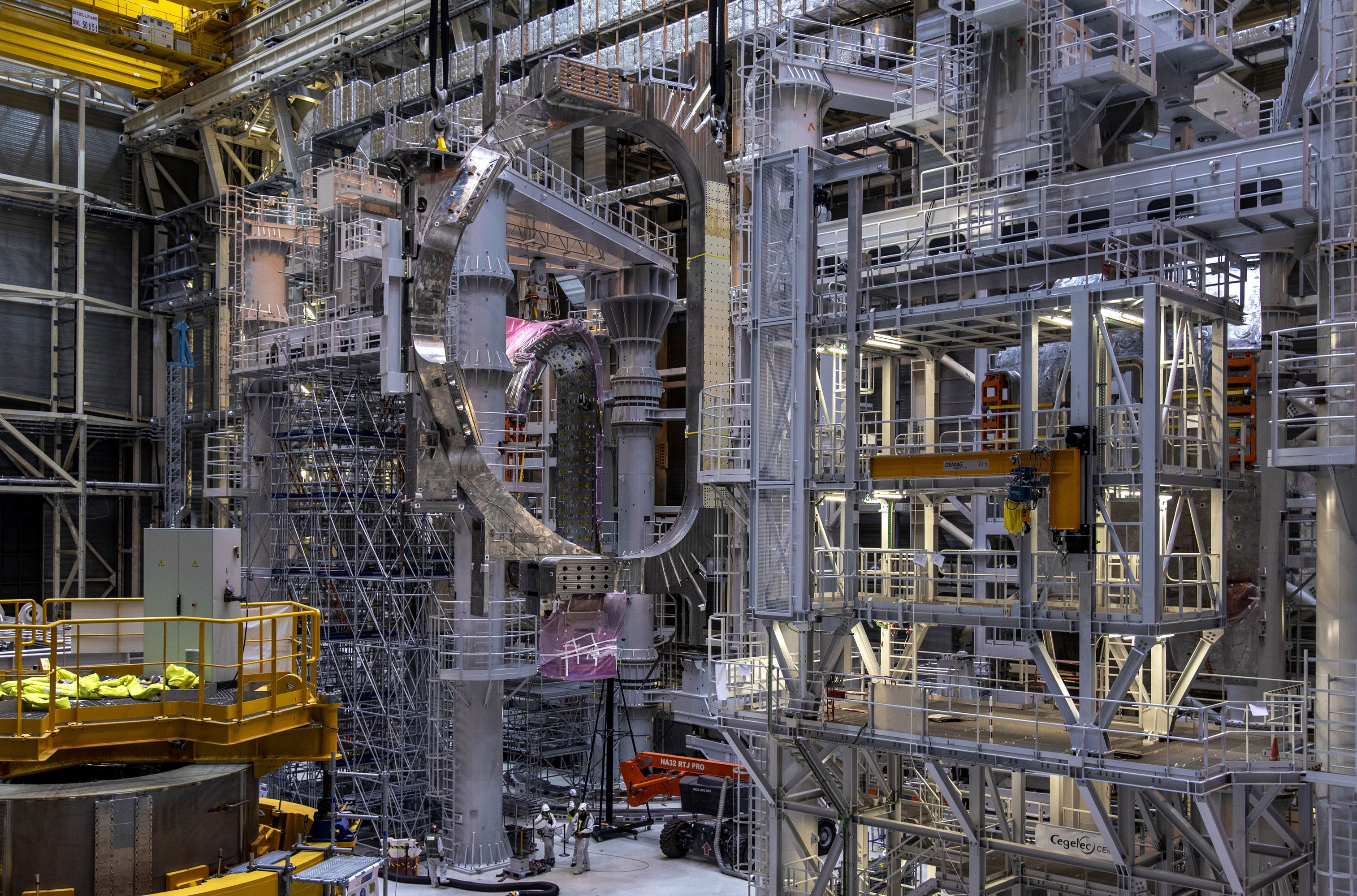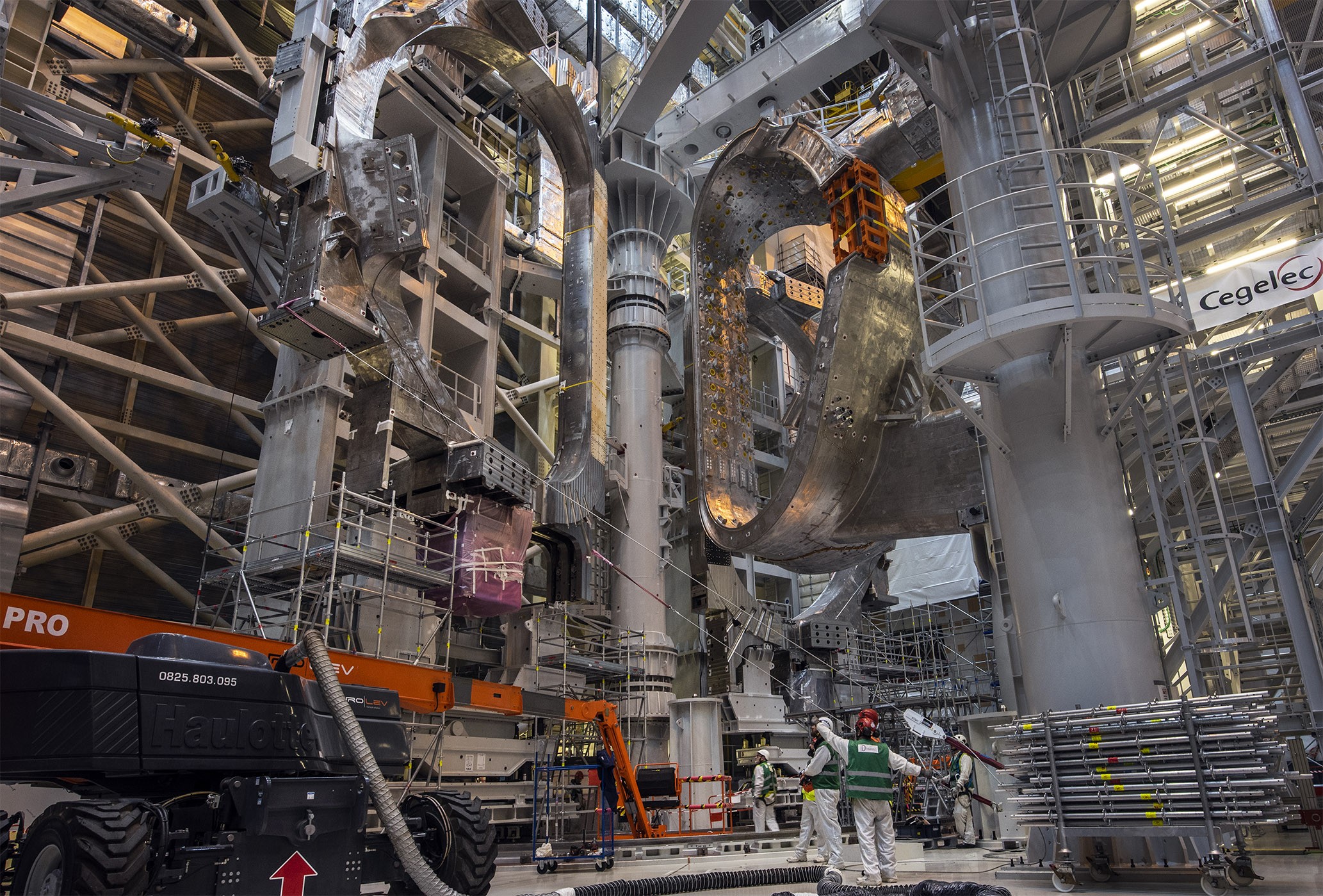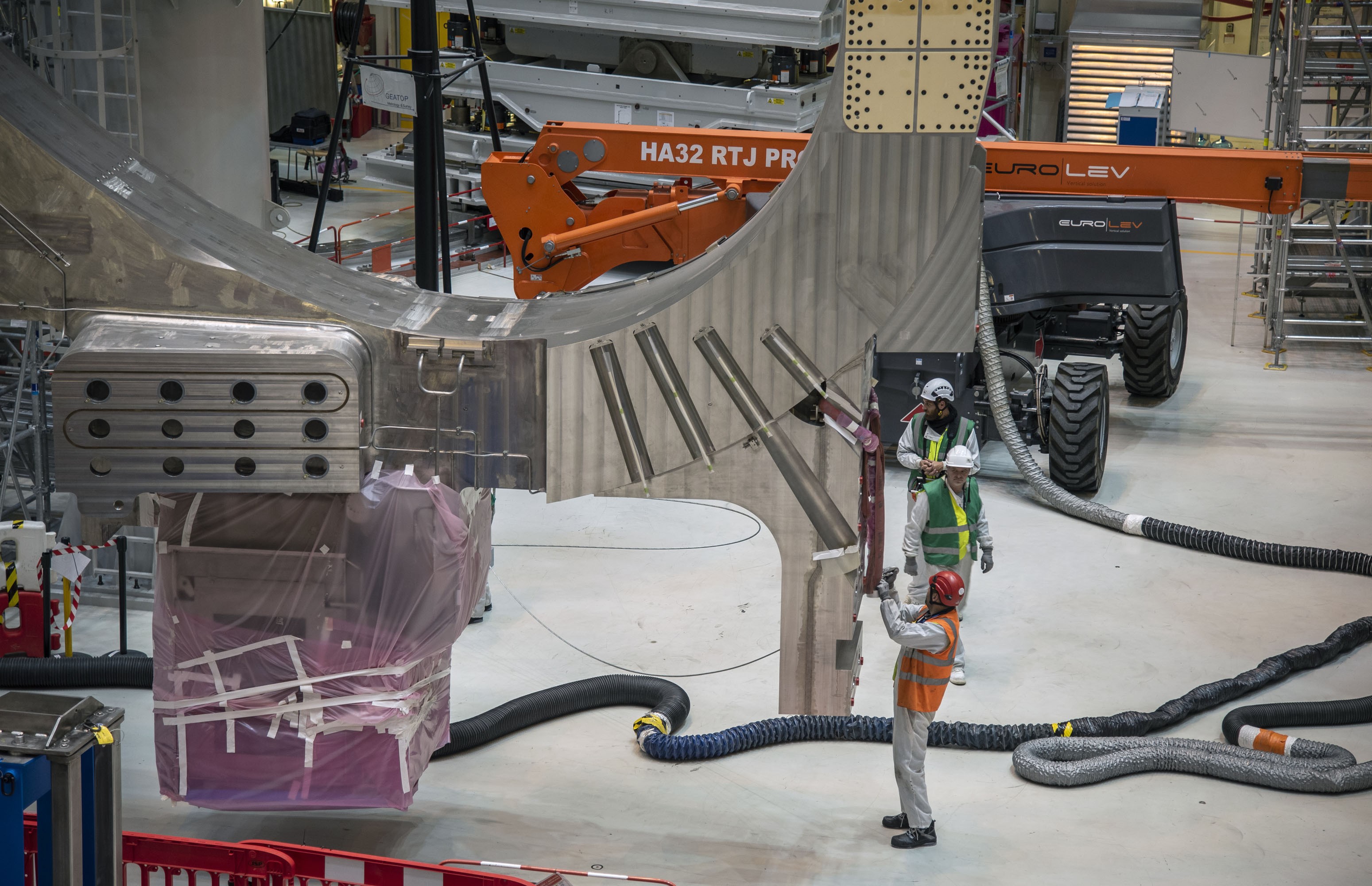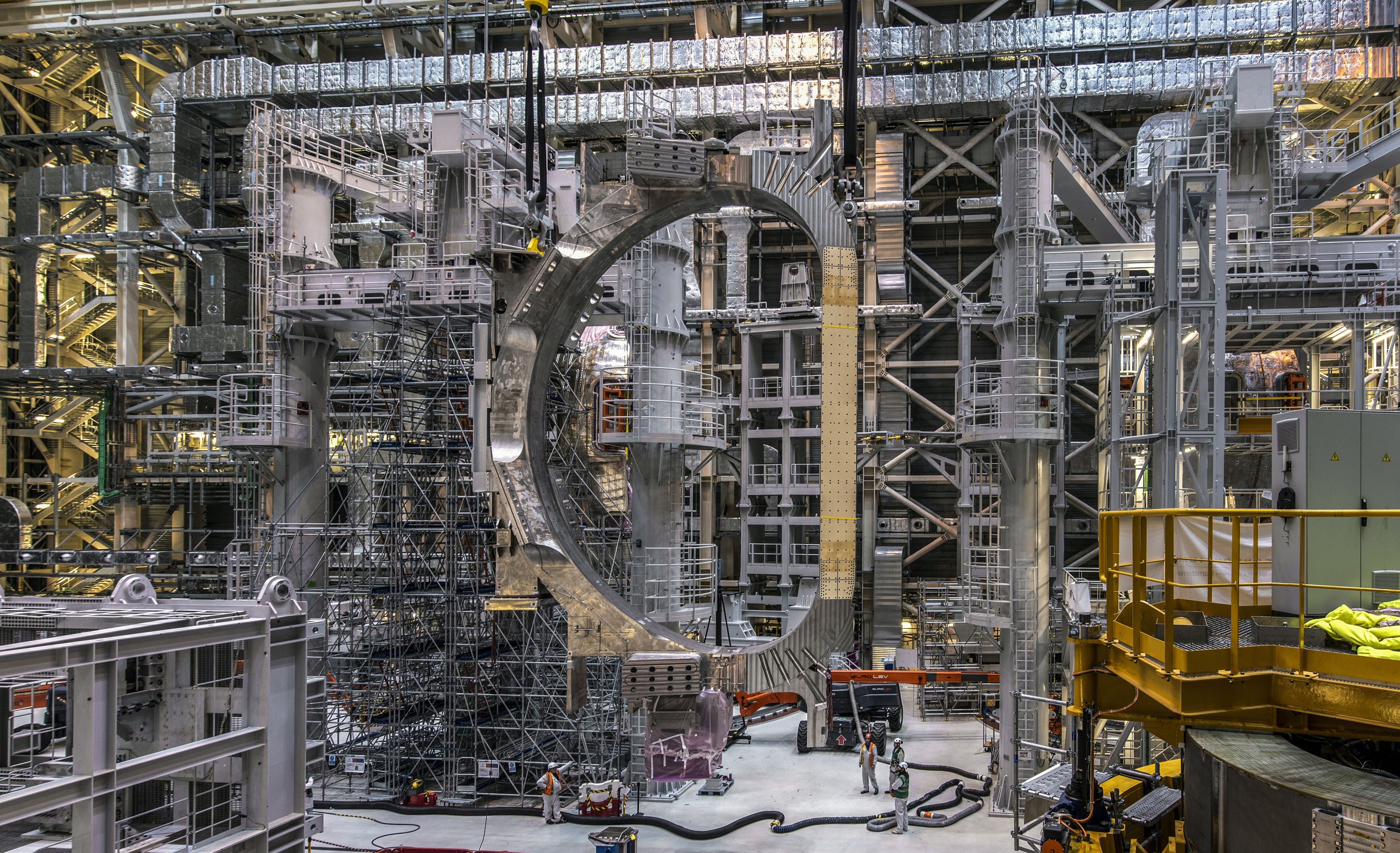Déposer, déplacer et démonter
Le démontage du module de secteur 1(7) sur le portique SSAT-1 devrait mobiliser les équipes jusqu'à la fin du mois de mars/début du mois d'avril. À ce moment-là, seul le secteur de chambre à vide situé au cœur du module sera encore présent sur l'outil de manutention. Il sera alors possible de redéplacer les bobines de champ toroïdal TF8 et TF9 vers les ailes du portique SSAT-1 afin de libérer SSAT-2.
Le secteur 8 de la chambre à vide, qui est actuellement installé dans le portique SSAT-2 sans bobines de champ toroïdal, sera extrait et transféré vers l'outil de redressement (« upending tool »). Cet outil sera alors utilisé « à l'envers » pour placer le secteur en position horizontale afin qu'il puisse être déposé sur une plateforme de transport et transféré vers un site de réparation.
Le portique SSAT-2 sera ainsi libéré, mais il ne restera pas inoccupé très longtemps.
Fin avril/début mai, une opération d'envergure assez délicate sera réalisée : le levage du module de secteur 6 afin de l'extraire du puits d'assemblage du tokamak, où il avait été installé à la fin du mois de mai 2022, pour le transférer vers le portique SSAT-2 en vue de son démontage et de sa réparation.
Pour déposer, déplacer et démonter des éléments aussi massifs afin de les rendre accessibles pour les réparations, il ne suffit pas d'inverser la procédure. Ces opérations exigent de la créativité, de l'anticipation et des facultés d'adaptation. Le transfert de deux bobines de champ toroïdal de 330 tonnes et 17 mètres de hauteur effectué sans incident la semaine dernière a montré que les équipes d'ITER étaient à la hauteur de cette tâche.

